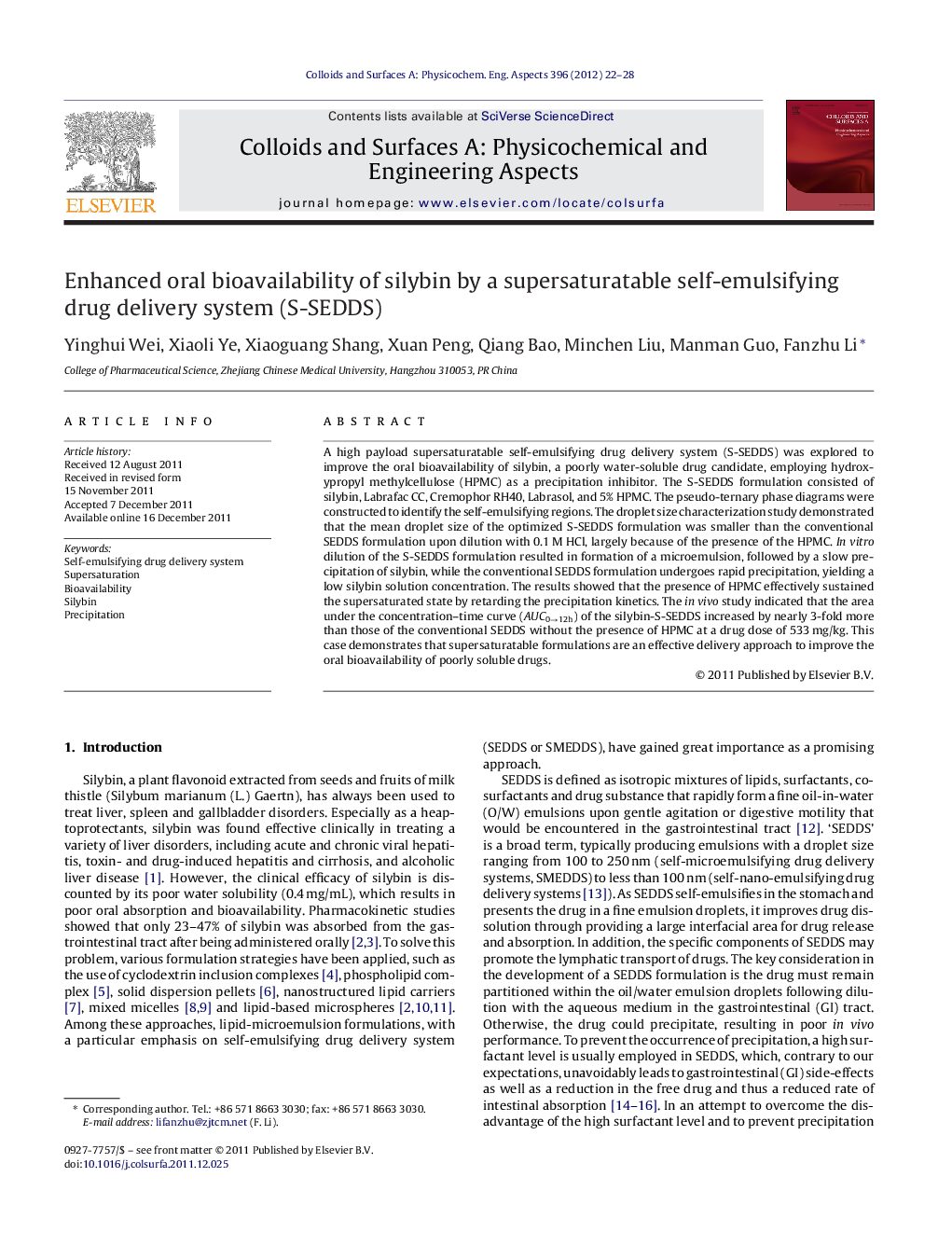| Article ID | Journal | Published Year | Pages | File Type |
|---|---|---|---|---|
| 594282 | Colloids and Surfaces A: Physicochemical and Engineering Aspects | 2012 | 7 Pages |
A high payload supersaturatable self-emulsifying drug delivery system (S-SEDDS) was explored to improve the oral bioavailability of silybin, a poorly water-soluble drug candidate, employing hydroxypropyl methylcellulose (HPMC) as a precipitation inhibitor. The S-SEDDS formulation consisted of silybin, Labrafac CC, Cremophor RH40, Labrasol, and 5% HPMC. The pseudo-ternary phase diagrams were constructed to identify the self-emulsifying regions. The droplet size characterization study demonstrated that the mean droplet size of the optimized S-SEDDS formulation was smaller than the conventional SEDDS formulation upon dilution with 0.1 M HCl, largely because of the presence of the HPMC. In vitro dilution of the S-SEDDS formulation resulted in formation of a microemulsion, followed by a slow precipitation of silybin, while the conventional SEDDS formulation undergoes rapid precipitation, yielding a low silybin solution concentration. The results showed that the presence of HPMC effectively sustained the supersaturated state by retarding the precipitation kinetics. The in vivo study indicated that the area under the concentration–time curve (AUC0→12h) of the silybin-S-SEDDS increased by nearly 3-fold more than those of the conventional SEDDS without the presence of HPMC at a drug dose of 533 mg/kg. This case demonstrates that supersaturatable formulations are an effective delivery approach to improve the oral bioavailability of poorly soluble drugs.
Graphical abstractWith HPMC suspended, a supersaturatable self-emulsifying drug delivery system (S-SEDDS) was designed to improve the oral bioavailability of silybin. In vitro dilution of the S-SEDDS formulation results in formation of a microemulsion, followed by a slow precipitation of silybin, while the conventional SEDDS formulation undergoes rapid precipitation, yielding a low silybin solution concentration. The in vivo study indicated that the S-SEDDS formulation have significantly increased the Cmax and area under the curve (AUC) of silybin compared to the conventional SEDDS formulation (P < 0.05).Figure optionsDownload full-size imageDownload as PowerPoint slideHighlights► High payload supersaturatable self-emulsifying drug delivery system (S-SEDDS) were prepared. ► The particle size of the diluted S-SEDDS is much smaller than that of conventional SEDDS. ► This system was proved to be stable and suitable for industrialization. ► Our results indicated the S-SEDDS approach could improve the bioavailability of silybin.
